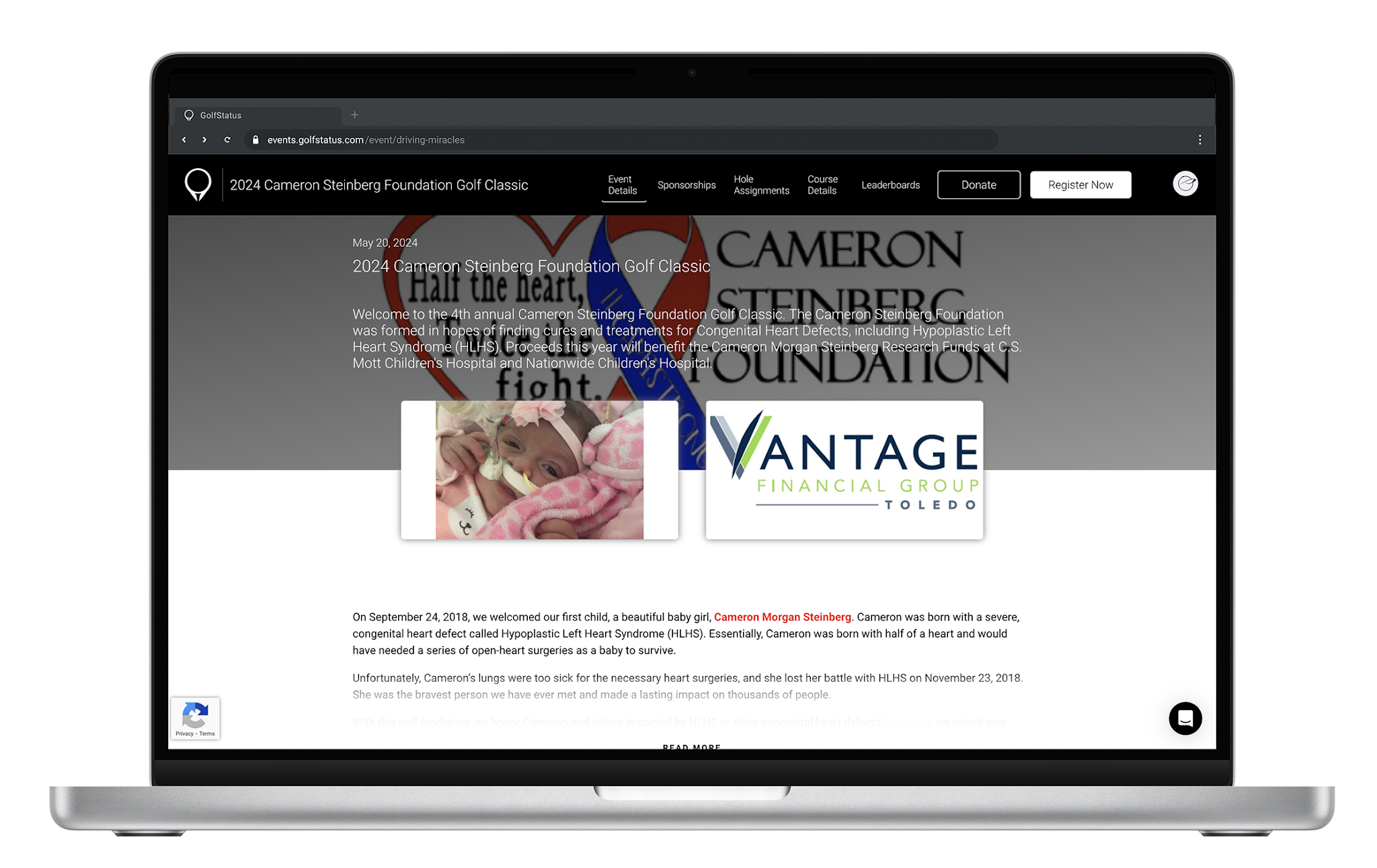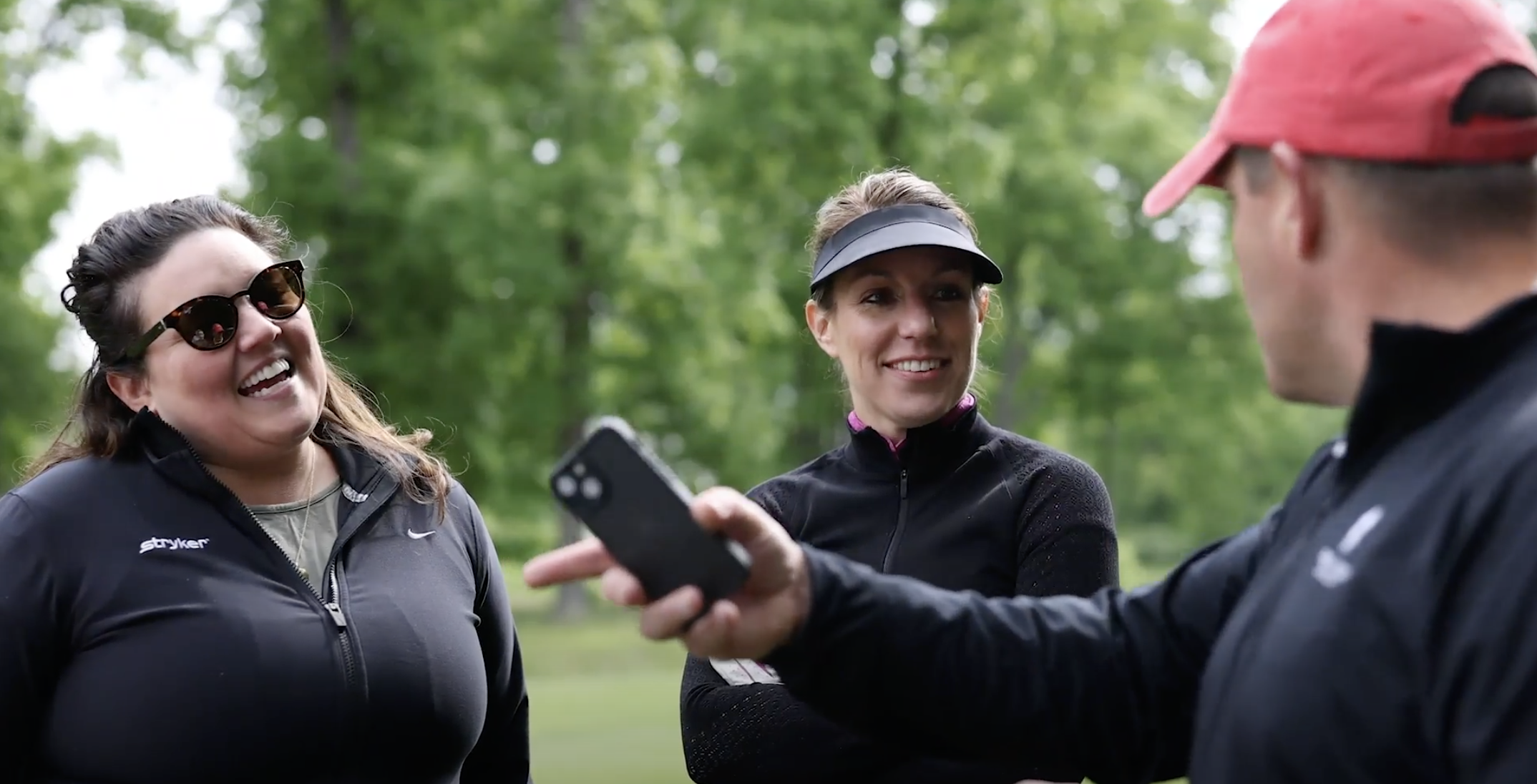by Jen Wemhoff, Communications Manager at GolfStatus
Technology has transformed the way nonprofits and other organizations plan and execute charity golf events, by streamlining processes, increasing participant engagement, and raising more money for important causes. But for many nonprofit organizers, implementing new technology for your golf tournament may require approval from superiors or a board of directors. If you’re in this boat and ready to jump on board with time-saving tech, here’s how to successfully get buy-in from decision-makers.
1. Identify the problems technology will solve
Before getting into the weeds of the features and benefits of the tech platform, start by framing the conversation around the problems it will solve for your tournament and the planning team. Are you spending a ton of time manually processing registrations and payments? Are you bouncing between siloed tools and platforms that create cumbersome processes? Are you spending more time sending payment receipts than promoting your tournament or connecting with sponsors? Is it difficult to communicate with and engage participants?
Example:
“We’re currently manually processing tournament registrations and payments, which takes significant time and leaves room for error. Using a golf-specific event management software would automate this process, giving staff more time to focus on selling teams and sponsorships.”
2. highlight how technology boosts efficiency & revenue
A solution that increases efficiency and revenue from your golf tournament is sure to get the attention of decision-makers! Explain how a tool that’s built just for golf events can help increase the overall impact of your charity golf tournament by:
Saving time. Automate repetitive tasks like registration, payment processing, donation receipts, registration closing dates, and more.
Increasing engagement. Tech that includes communication tools and solutions like live leaderboards offers increased engagement with golfers and sponsors, which creates a stronger connection to your nonprofit’s cause.
Raising more money. The right tech platform brings opportunities to drive revenue, like online donations, a round-up feature at checkout, exclusive sponsorships, premium digital exposure, and add-ons.
Simplifying post-tournament accounting. If you’re a third party holding a golf tournament to raise money for a charity, your platform can function as the “bank” for the event. Funds are collected and held throughout planning and can be distributed directly to the charity after the event.
Example:
“Golf event management software can save our planning team 40 hours or more and help bring in an extra $4,000 or more in additional revenue.”
3. share real-world examples from other nonprofits
Nothing drives home how well a tool works than showing how your peers have benefited from it. Show decision-makers how other nonprofits and events have successfully adopted tech for their golf events and the positive ROI they experienced. Seek out case studies, talk to other golf tournament organizers, or look at online reviews (such as Google or Capterra) to help make your case.
Example:
“The Golf Fore Kids Classic cut their administrative time in half by using golf event management software and sold out their sponsorships thanks to the extra digital exposure provided by the platform.”
4. provide a cost-benefit analysis
Many boards or leadership teams will likely have concerns about the cost of implementing a new technology—both in terms of the cost to use the software as well as staff time spent learning to use it. Prepare a cost-benefit analysis that outlines upfront costs, any additional fees or estimated costs, and the projected benefits to help alleviate financial concerns. Compare all costs to the potential revenue increase and savings on time and effort.
Example:
“The golf event software I’m exploring comes with no upfront cost and minimal processing fees, which we can pass along to golfers and sponsors. There’s no risk to us to try it.”
5. demonstrate how tech enhances the tournament experience
Your organization’s decision-makers will likely be interested in how any technology will impact tournament participants and the overall experience. Demonstrating how it will improve the experience for golfers, donors, sponsors, and volunteers is a key part of getting their approval. For instance, golfers and sponsors expect online registration with secure payment processing and a simple checkout process. Other experience-enhancing features might include live scoring and leaderboards, online donations, and a donation tracker.
Example:
“Golfers and sponsors will have a better experience with online registration, live scoring, online donations, and digital sponsor exposure, which increases the likelihood that they’ll come back year after year.”
6. Get them to see a demo or explore the software
The best way to convince your team? Let them see it in action! Book a quick demo so they can ask questions firsthand or share access to the software so they can explore it on their own terms. Either way, they’ll see the platform’s benefits and capabilities to ease their concerns about making the jump to a new tool.
Example:
“We can schedule a quick 15-minute call with an account rep to go over the highlights of the software and you can ask questions and have your concerns addressed.”
7. overcome red tape & bureaucratic hurdles
In many organizations, even the most beneficial changes can face obstacles due to red tape or bureaucratic processes. While it can be frustrating, you can take steps to navigate these challenges:
Anticipate blockers. Understanding the processes will help you prepare for approval, particularly if multiple departments are involved. By identifying delays ahead of time, you can proactively account for them. These might include legal compliance checks, approval from finance or accounting, and a sign off from IT.
Get the buy-in of key stakeholders. Decisions can be delayed when certain leaders aren’t fully on board. Talk with the necessary individuals or departments ahead of time to explain the benefits and address any concerns at the outset.
Create a clear implementation plan. Provide a step-by-step plan with timelines and how the tech will be integrated with minimal disruption in the day-to-day operations and the overall tournament flow.
Address concerns head on. Change can be scary, so think through potential objections and offer clear solutions that address concerns about switching to a new tech tool for your golf event.
Be patient—but persistent. Overcoming red tape is an exercise in patience, but also in following through. Find a balance between keeping the tech proposal top-of-mind while allowing it to work through the system.
Example:
“I’ll work with finance and IT to get their blessing first, then create an implementation plan that includes ample time for staff training ahead of the golf tournament, and follow up regularly with department heads to keep this request moving forward.”
Other things to mention
Support. They’ll want to know if there is a team of knowledgeable, responsive folks available to help troubleshoot, provide coaching, and assist you and your golfers—and if there’s any cost to access the support team.
Security. You might discuss the tech provider’s security standard, such as PCI-compliance (for credit card transaction) and data privacy.
Long-term benefits. Share how easy it is to copy an event each year so there’s no need to start from scratch. This takes advantage of processes and event infrastructure that have already been built, ultimately saving your team time.
Next Steps
Getting approval to implement new technology for your charity golf event comes down to clearly communicating its benefits, addressing concerns, and showing how it can lead to greater success for both the event and your nonprofit as a whole.
A platform like GolfStatus, which is built specifically for golf events, is a great option to streamline your tournament from top to bottom. It starts with an event website with integrated online registration and payment processing, built-in time-saving automations, and opportunities to raise thousands more dollars. Nonprofits and third parties planning charity golf events can qualify to use GolfStatus at no upfront cost through the Golf for Good program.




















































